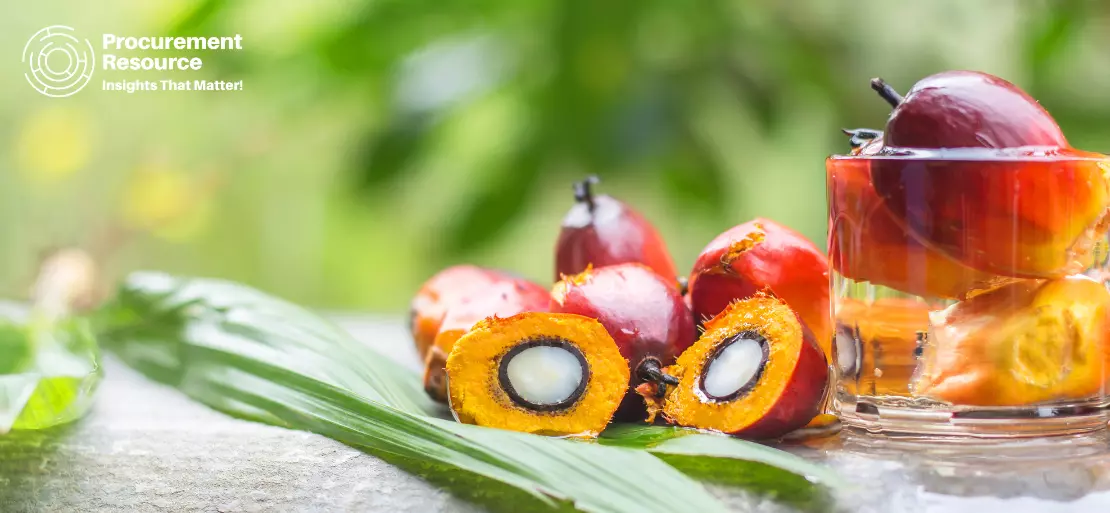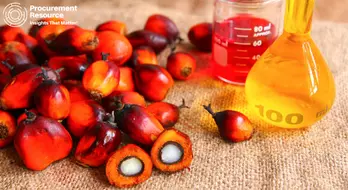Palm oil Prices will Remain Firm in Short Term due to Supply Disruptions in Malaysia

Due to supply disruptions in Malaysia, palm oil prices will remain firm in the short term. Palm oil prices are anticipated to rise further as production is reduced by excessive rain in major producing nations and demand increases for its usage in biofuels and food.
Although prices for palm oil have increased by around a fifth this month, they are still far below the record high reached in March 2022. Consumers already suffering from inflation brought on by the Russia-Ukraine war will be burdened by the anticipated price increase, while major producers of palm oil in Indonesia and Malaysia will be able to reduce stocks due to higher exports and lower output.
Traders said November 2022 shipments of crude palm oil to India, the world's biggest importer, are allegedly running at an offered price ofUSD 976 per ton including cost, freight, and insurance. January 2022 deliveries are being quoted at USD 1,010 per ton.
But prices could move above USD 1,100 if Indonesia decides to restore export levies, which is very likely. Indonesia's decision to suspend export levies in July 2022 because of a buildup of stocks pulled down palm oil prices from the March high of about USD 2.010 per ton.
Request Access For Regular Price Update of palm oil
Despite this month's price increase, palm oil trades at a discountof about USD 400 per ton, the highest in a decade, according to the traders. The discounted prices are directly sensed at imposing a tough competition to soy oil prices. The quoted price for crude soy oil for November 2022 delivery in India is USD 1,405 per ton. According to market experts, there is a significant and unsustainable spread between soy oil and palm oil.
Stocks Fall Down in Indonesia
The rebate on soy oil and the removal of the export tax have accelerated Indonesian palm oil exports, and supplies are depleting more quickly than expected.
According to estimates by the Indonesian Palm Oil Association, Indonesia's palm oil stockpile decreased to 4.04 million tons in the month of August 2022 from 5.91 million tons and 6.69 million tons in the month of June 2022.
There is also an increasing demand for biodiesel made from palm oil. Indonesia exported 206,000 tons of biodiesel from January 2022 to August 2022, exceeding the 167,000 tons the nation exported in 2021.
After the Russia-Ukraine war, supplies of sunflower oil, an alternative to palm oil, from the Black Sea region have been unstable.
According to market experts, 76% of the world's sunflower oil exports come from the Black Sea region, and any disruption could increase demand for palm oil. Palm oil prices fell as a result of Indonesia's decision to halt export taxes, and they further dropped after sunflower oil supplies from the Black Sea region restarted in August 2022 as a result of a U.N.-mediated agreement.
The export charge exemption may not be maintained by Jakarta after December, buyers worry, as stocks will be easier to manage. Indonesian taxes would raise the cost of palm oil at a time when sunflower oil is in short supply.
According to Procurement Resource, palm oil prices will remain stable in the near future due to supply disruptions in Malaysia. Prices for palm oil are expected to increase further as demand grows for its use in food and biofuels, and production is reduced by excessive rain in the main producing countries.
Read More About palm oil Production Cost Reports - REQUEST FREE SAMPLE COPY IN PDF
Although palm oil prices have risen by about a fifth this month, they are still considerably lower than the record high reached in March 2022. The anticipated price increase will burden consumers already struggling with inflation brought on by the Russia-Ukraine conflict, while major palm oil producers in Indonesia and Malaysia will be able to reduce stocks due to higher exports and lower consumption.

.webp)

